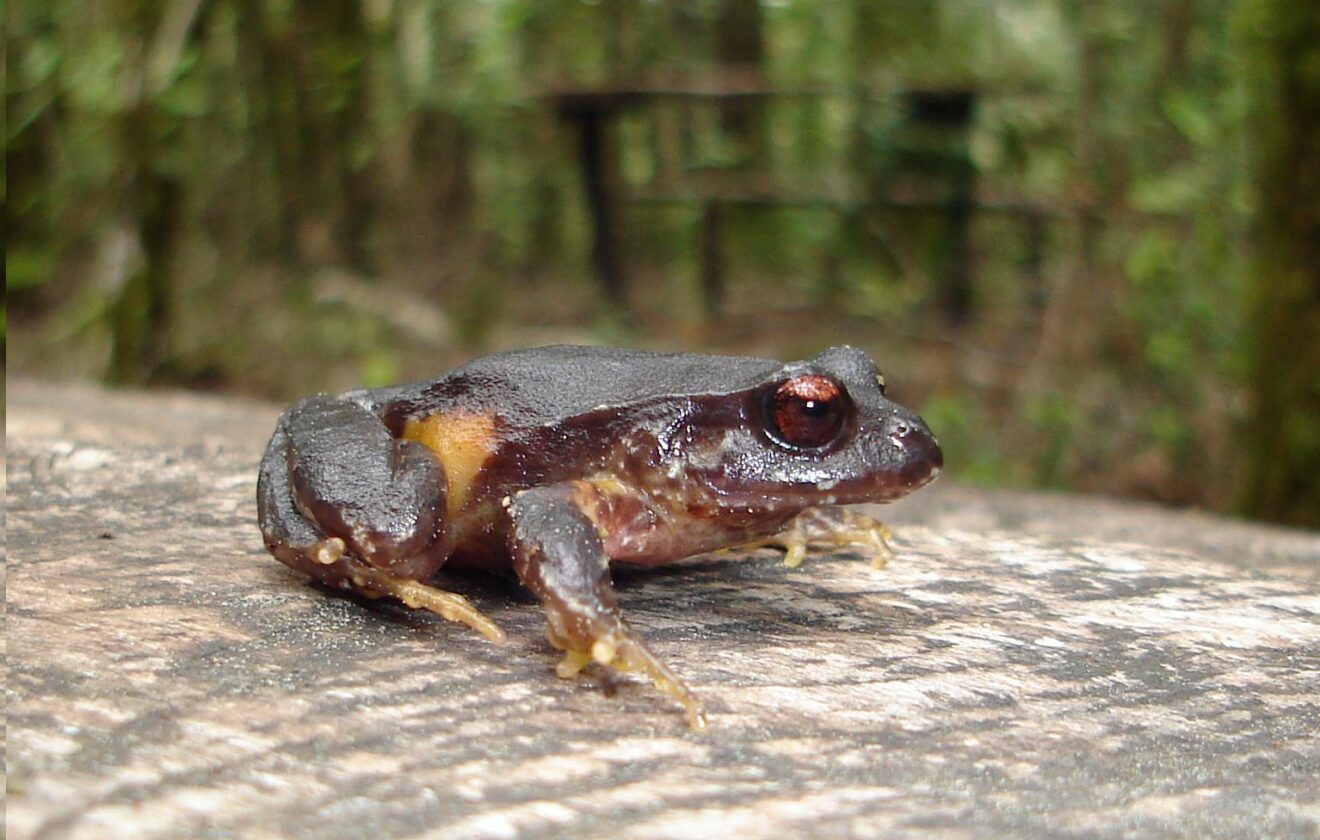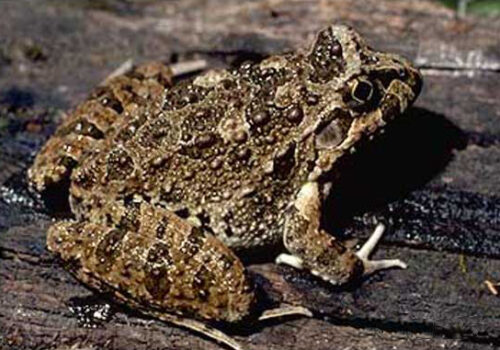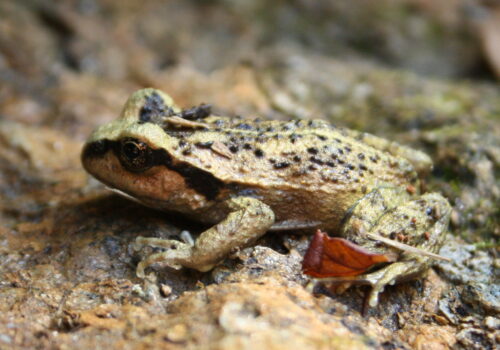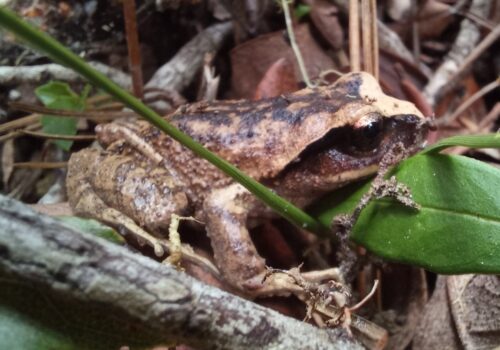- Eupsophus roseus: The Enchanting Rose-Colored Frog of Southern Chile's Forests
Eupsophus roseus: The Enchanting Rose-Colored Frog of Southern Chile’s Forests#
Hidden deep within the lush, verdant forests of southern Chile lives a remarkable amphibian, whose gentle hues and subtle elegance captivate both biologists and nature-lovers alike. Known scientifically as Eupsophus roseus, the Rose Ground Frog is a fascinating yet elusive creature blending seamlessly into its moss-covered habitat. Its unassuming presence belies its crucial role within its fragile ecosystem. While many amphibians capture attention through vivid coloration or daring behaviors, the charm of Eupsophus roseus springs from its gentle grace, unique life habits, and distinctive parental care—making it a true hidden gem of southern hemisphere biodiversity.
Taxonomy and Classification#
Belonging to the family Alsodidae, Eupsophus roseus is a member of a fascinating lineage often referred to collectively as the Chilean ground frogs. First formally described by the renowned zoologist André Duméril and his son Auguste Duméril in 1841, the genus Eupsophus comprises several closely related species, each distinguished by subtle morphological traits and distinct geographical ranges.
Within this genus, Eupsophus roseus occupies a relatively specialized ecological niche, having adapted uniquely to temperate rainforest habitats. Closely related species, such as Eupsophus calcaratus and Eupsophus vertebralis, similarly share temperate southern forests but often inhabit distinct geographic ranges or micro-habitats, underscoring the precise adaptation and evolutionary finesse of these small frogs.
Natural Habitat#
A World Under the Leaf-Litter: Forest Floors of Southern Chile#
Eupsophus roseus primarily inhabits the temperate rainforest regions spanning the southern Chilean provinces of Valdivia, Osorno, and Chiloé Island. These lush rainforests are quintessentially South American, defined by towering evergreen trees blanketed in hanging moss, dense ferns, and a rich carpet of fallen leaves and decaying wood—an ideal refuge for these cryptic frogs.
Unlike some amphibians that seek freshwater ponds and streams, Eupsophus roseus thrives predominantly on moist terrestrial substrates, relying on the consistently damp leaf litter that covers much of its home range. The layer provides optimal humidity, necessary shelter from predators, and an abundance of prey, such as tiny insects and worms. Although primarily terrestrial, the Rose Ground Frog’s lifecycle occasionally draws them closer to quiet stream banks and moist depressions after rainfalls during their breeding periods.
Within these gently rolling, often mist-enshrouded landscapes, their delicate, secretive habits blend seamlessly into an environment usually cloaked in twilight. The species appears beautifully adapted to this temperate haven, reflecting thousands of years of evolutionary refinement.
Physical Characteristics#
At first glance, the Rose Ground Frog is undeniably charming. Typically measuring between 30 and 40 millimeters in length, this small frog is subtle rather than flamboyant in appearance. True to its common name, it bears a delicate rose or reddish-brown hue with shades varying between individuals. Such coloration provides excellent camouflage among leaf debris and decaying plant matter, hiding it from predators’ sharp eyes.
The skin, intriguingly textured and somewhat granular, enhances the frog’s cryptic appearance. Complementing their rosy hues, their body occasionally exhibits faint spots or light mottling—subtle patterns that further conceal their body in complex forest floor lighting. The head, rounded and proportionately large, hosts eyes that appear gentle yet watchful, continuously scanning for prey or danger.
It’s their limbs, sturdily built and adapted for navigating the uneven forest floor terrain, that distinguish them as ground dwellers. Unlike many tree frogs, Eupsophus roseus lacks expansive toe pads for climbing vertical surfaces, instead favoring strength and agility geared towards hopping through tangled forest debris or burrowing gently into soft earth to keep moist and concealed.
Each physical trait displayed by this small amphibian is an elegant biological innovation that echoes the subtle artistry of nature’s evolutionary processes. Every hue and texture is purposeful—a testament to biological finesse.
Behavior and Life Cycle#
Tiny Forest Hunters: Predation and Feeding Habits#
Crouched under layers of damp leaves, Eupsophus roseus remains largely inactive through daylight hours, emerging primarily at twilight or after rainfall. During these active periods, they embark on silent hunts for their favorite prey—small invertebrates such as beetles, ants, spiders, mites, and earthworms. They are ambush predators by nature, patiently waiting until prey comes within reach, then quickly snapping forward to seize small creatures with mouth and tongue.
Parental Dedication: A Remarkable Reproductive Strategy#
Perhaps no facet of their life is as uniquely compelling as their reproductive behavior. During the humid breeding season, typically coinciding with southern Chile’s warm and rainy spring months, males begin vocalizing gently to attract receptive partners. Their calls, although faint and easily lost amidst the forest’s evening chorus, are crucial signals within their intimate, leaf-covered world.
Females lay small batches of eggs directly into carefully selected burrows or leaf-covered depressions rather than directly in water. After laying, parental investment does not cease—females exhibit an outstanding degree of maternal care, remaining vigilantly alongside the egg clutches, guarding them from fungal infections, parasites, and predators.
Following egg-laying and protection, another remarkable stage commences: direct development. Uniquely, the eggs of Eupsophus roseus do not hatch into free-swimming tadpoles as seen in many other frog species. Instead, embryos develop fully within the eggs, eventually emerging as miniature froglets, tiny replicas of adults, already adapted and ready to brave the forest floor from their very first moments.
Ecological Role#
As elusive as it is small, the Rose Ground Frog occupies a crucial and multi-dimensional ecological role. Predatory habits mean they help regulate forest-floor insect populations, contributing subtly but significantly to overall ecosystem balance. Simultaneously, they are an essential food source for an array of predators—birds, mammals, larger amphibians, and reptiles—thereby creating meaningful links in the complex web of forest life.
Additionally, due to their sensitivity to environmental change and moisture fluctuations, these frogs serve as effective biological indicators. Their presence and abundance suggest a healthy, balanced forest ecosystem, while declining populations may indicate underlying issues such as habitat degradation, climate change effects, or harmful human interference.
Threats and Conservation Status#
Habitat loss and fragmentation remain primary threats facing Eupsophus roseus. Deforestation, plantation agriculture, and the encroachment of urban areas drastically reduce and fragment this amphibian’s natural habitats. Climate change further complicates matters, altering local rainfall patterns critical to the frog’s breeding and survival.
The International Union for Conservation of Nature (IUCN) currently categorizes Eupsophus roseus as “Least Concern,” primarily due to its fairly broad distribution. Nevertheless, conservationists stress that this status provides no room for complacency. Continued deforestation and habitat damage, if unchecked, could pose serious future challenges. Effective conservation demands increased habitat protection and conscious forest management practices, prioritizing ecological balance and the health of forest-dwelling species like Eupsophus roseus.
Cultural and Scientific Significance#
While Eupsophus roseus lacks dramatic myths or prominent standing in Indigenous folklore, its scientific value is immense. Studies involving their unique reproductive strategies provide valuable knowledge about amphibian evolutionary ecology and adaptation. Additionally, due to their sensitivity to environmental perturbations, they often serve as canaries in the coal mine, alerting researchers and ecologists to subtle yet meaningful shifts in ecosystem health.
Conclusion: Protecting the Hidden Jewel of Chile’s Forests#
The Rose Ground Frog, Eupsophus roseus, embodies resilience, subtlety, and fascinating evolutionary adaptation. Its quiet, secretive life holds important clues for biologists, conservationists, and those exploring the complex tapestry of Earth’s biodiversity. Ensuring continued conservation efforts and increased ecological awareness is critical—not only for frogs themselves but for the well-being of entire ecosystems and future generations who deserve to inherit the full spectrum of Earth’s natural beauty.
Now is the moment to delve deeper, become informed, and champion efforts to safeguard these small yet extraordinary creatures, hidden away beneath southern Chile’s timeless emerald canopy.















